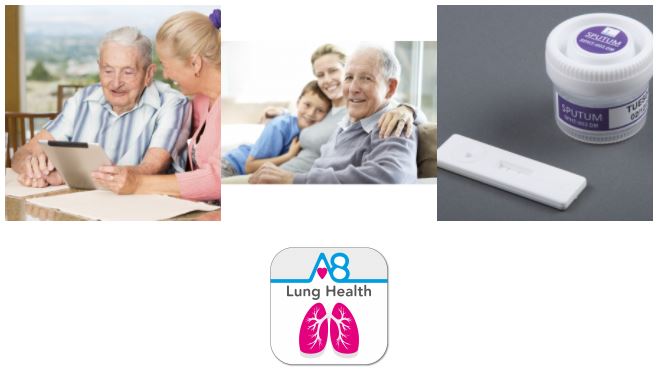Improving Health of People with Long-term Conditions
Home use sputum test for the prediction of exacerbation of lung infections in people with long-term lung conditions.
Aseptika is developing a home-use sputum test for the prediction of exacerbation of lung infections in people with long-term lung conditions. From its original laboratory format requiring a skilled technician the test is being moved onto a new platform, a cassette format (Lateral Flow Device) and dedicated reading device (Always Connected). Patients at home will be able to predict an increase in virulence of the bacteria in chronically infected lungs, supporting clinicians in their decision about the efficacy of the antibiotics being prescribed. Small-scale trials have been conducted with volunteers who have Cystic Fibrosis using the laboratory-based test. Further clinical trials have also been completed with elderly patients who have other conditions such as Chronic Obstructive Pulmonary Disease (COPD), non-CF Bronchiectasis (NCFB) and Asthma.
Many with chronic lung infections of Pseudomonas aeruginosa are frequently admitted to hospital with respiratory failure. Each unscheduled admission can last between 8-10 days and some patients are admitted 2-4 times each year. As part of a self-management process agreed with their clinical team, it is hoped that patient self-monitoring can reduce the frequency of unscheduled admissions by 50-80%. The benefit for the patient is the longer preservation of lung function through preservation by seeking treatment earlier through the early warning gained by tracking bacterial biomarkers and other simple indicators such as: weight, levels of physical activity, temperature, blood pressure, oxygen saturation and scores of wellness. Taken together, the patient, their family, friends and carers can build a better understanding of their current state of health and share these data with the healthcare professionals when needed.
From the most recent clinical trial researchers were surprised by the level of engagement and incorporation of a new routine by volunteers of self-monitoring daily 41 health parameters with simple Bluetooth connected medical devices and uploading these to an iPad via the SENSOR App and just how well this older age group have taken to the technology. None of this was achieved by accident. Patient empowerment, education at information events, easy-to-use software, training, encouragement, patients’ enthusiasm for clinical research and responsive support from Aseptika and the Clinicians who are leading the programme all contribute to success.
Patients report increased confidence to seek help earlier through using the system, with other benefits to patients including improved access to and engagement with technology and online social media, passion for physical activity as measured through use of the wrist-worn activity tracker.
PATIENT 1 is one such participant in the SENSOR project. Life had been difficult for PATIENT 1 leading up to her involvement in research. Rheumatoid arthritis and prolonged respiratory issues, including bronchiectasis and asthma, made getting around a challenge and eventually she could no longer remain in her employment. Whilst being treated for double pneumonia she was introduced to the SENSOR study and she hasn’t looked back. “It has opened my eyes up to how my chest is day to day. Using the equipment provided by the SENSOR team, I can see it on a scale from one day to another” says PATIENT 1. “It has had a really positive impact on my life. It is much easier to get on with my life. I feel privileged being asked to do it.”

